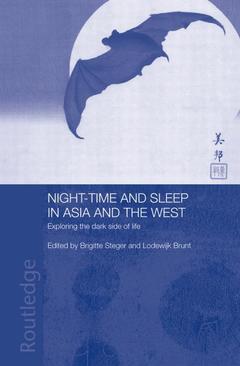Description
Night-time and Sleep in Asia and the West
Exploring the Dark Side of Life
Anthropology of Asia Series
Coordinators: Brunt Lodewijk, Steger Brigitte
Language: English
Keywords
daytime; sleeping; afternoon; nap; urban; falling; asleep; midday; napping; nocturnal; Young Men; Daytime Sleeping; Dong Xian; Urban Night; Midday Napping; Monophasic Sleep; Night Watchmen; Polyphasic Sleep; Sleeping Time; Sleep Reduction; Karaoke Box; Early Chinese Literature; Sleep Management Strategies; Rough Sleepers; Global Time Scale; Wen Zhi; Grape Vines; Early Chinese Texts; Nocturnal Sleep; North British Daily Mail; Telephone Club; Rem Sleep; City Night; Public Time Schedule; Estimate Sleep Duration
Publication date: 12-2013
Support: Print on demand
Publication date: 08-2003
240 p. · 15.6x23.4 cm · Hardback
Description
/li>Contents
/li>Readership
/li>Biography
/li>Comment
/li>
Ideas and practices concerning sleep and night-time are constantly changing and widely varied in different cultures and societies. What we do during the day and night is the result of much political struggle. Trade unions, political parties, entrepreneurs, leaders and schools boards, all have an interest in questions of timing for the opening and closing of shops, the starting hours of schools and factories, and the number of hours people have to work and sleep. By drawing together comparative case studies from countries in both Asia and Europe, Night-time and Sleep in Asia and the West allows the reader to track the differences in the cultural importance given to the night, and to compare the ways in which the challenges and opportunities of modernity have been played out in the East and the West.
Brigitte Steger is Assistant Professor in Japanese Studies at the University of Vienna.,
Lodewijk Brunt is Professor of Urban Studies at the University of Amsterdam.
These books may interest you

Interdisciplinary Perspectives on the Relation between Sleep and Learning in Early Development 91.63 €

The Nocturnal City 48.88 €

The Nocturnal City 160.25 €

